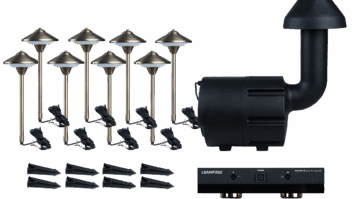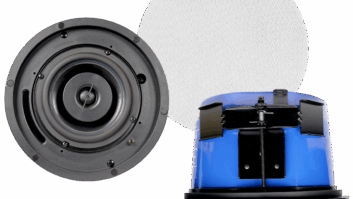Last April, HTSA introduced the concept of EOS (Entrepreneurial Operating System) to its members, and earlier this month 30 members of the buying group attended a day-and-half master class on how to implement the well-known management process into their businesses. It was a crash course on how to get the correct people in place on your leadership team and establish a disciplined approach to holding purposeful meetings, setting short- and long-term goals, and solving problems.

Todd SmartLed by professional “implementer” Todd Smart, of Smart Partners, who typically charges $75,000 for 10 onsite consulting sessions over a two-year period with a client company, the June 20-21 EOS Master Class in Chicago provided attendees with a thorough overview of the program and specific guidance to attendees who were guided through solutions to their management challenges.
Much of the content in the EOS program and its associated books “Traction” and “How to be a Great Boss,” is common sense, but it also establishes a discipline that many small businesses, particularly in the AV integration channel, are simply lacking.
“We, as a company, have the same sort of struggles that I’m hearing a lot of these companies have. Having somebody to provide some sort of structure, to keep things on task, and provide a system for helping us move our way through the process is hugely important,” said Brian Perreault, who is one of three members of the Barrett’s Technology Solutions executive team that attended the class. “

Barrett’s Brian Perreault, John Cook, and Joe BarrettChicago-based Barrett’s is one of the oldest and most successful members of HTSA. Yet the company acknowledged that it has “50 years of old habits” to correct.
“Business is good, but we can’t keep up,” Barrett’s president Joe Barrett said. “It’s all prioritization right now. We’re not getting everything done; just the most important things get done.”
Smart began the HTSA master class by describing EOS as “a super-simple, no-fluff system.” The process, he said, is a “two-year journey” for a company with strategic planning as a portion of it; yet it’s more about execution of a plan, formulating a three-year picture that will eventually become a company’s “current reality.”
“EOS helps you put the right tools in place for you company,” he said.
Those tools include weekly 90-minute leadership team meetings, which are referred to within EOS as “Level 10s.” The key, Smart said, is making sure the correct people are in those meetings.
“You should look at the ‘seats’ within your company and identify the biggest pain points,” he said. “The people side of the business is difficult, but there are tools to help you get through it so that it becomes fun to go to work.”
The goal of EOS, Smart said, is to help a company become both healthy and smart, with open and honest communication. When the leadership team is on the same page, there is no talking behind anyone’s back; you’re unified and functional, and you think like a winning team. “People cover each other’s weaknesses with their own strengths,” he said.
And just like a good parent to his or her own family, you only set rules that you are also willing to follow yourself. And, Smart said, it’s important to accept responsibility for shortcomings in your company, or you won’t be able to fix problems. “You won’t get anywhere by playing the blame game, because then you are training your team to rationalize or justify things when they don’t go right,” he said. “Instead, what are you going to do to make it better?”
Where all of these axioms lead, Smart concluded, is that you cannot build a great business without an operating system of some sort, whether it’s EOS or another brand, because it helps a company speak the same language, reducing complexity and easing confusion between employees.

Novot Shoresh and Michelle Richardson of Spire Integrated SystemsEOS consists of six key components that must be “managed and strengthened to be a great business.” You can read more about “Vision, People, Data, Issues, Process, and Traction” here, and Smart said that the goal is to get all six of these components to 80-percent correct, by thinking of it as a game. You want to establish a vision for your company that is shared by all and that includes a 10-year target, a marketing strategy, a proven process, and a three-year picture. Those goals should be a “vivid visualization” of where your business will be at various points in the timeline to the 10-year goal. As part of that, you take a “one-year slice” and break that down into what are called quarterly “rocks.” These short-term goals enable a company to achieve a 10-year vision, in small steps.
EOS also involves writing down the five key values of your company and making sure that all employees (especially the leadership team) share those values.
For many companies exploring or already using EOS, the idea of “rocks” has been a revelation. These 90-day goals are broken down into seven-day goals, which require near-term accountability by the next weekly Level 10 meeting. Leadership team members take on a seven-day task, but are told only to sign up for an assignment that they can get done by the next meeting. The key is making sure your company has a visionary leader in place at the top of the executive team, and a process-minded “integrator” to keep goals on track.
“With a little groundwork, I think that Level 10 meetings are something that we can get up and running pretty quickly,” Barrett’s Perreault said. “But, it’s important to have an ‘integrator’ to keep everything on task. Right now, we’re at a point in our business where we’re growing, but everybody is going in a lot of different directions. We have a lot of very unproductive meetings, so having that structure will help us move through goals and ultimately save time. Setting goals and measuring them along the way is huge. That’s something that we don’t do enough of in our company. I’m motivated. I think it’s going to be really good for us.”
Another HTSA veteran, David Young, owner of The Sound Room, in St. Louis, is already doing a lot of similar EOS processes, with metrics that are reported at weekly Tuesday meetings (because he hates Mondays). But limiting those meetings to 90 minutes has been difficult, and other EOS lessons from the HTSA master class have served as inspiration for improving his process, as well.
“I’m going to work on my Level 10 meetings,” he said. “We’re going to go over our culture and the goal setting. We’ve set big goals, but what we need to do is fill in the plan with the ‘how to’ to get to those bigger goals—the quarterlies and the ‘rocks.’ A lot of this stuff is just natural, but this is a more organized and disciplined way of doing it.”
Doug Dushan, senior sales consultant and marketing coordinator for Echo Systems in Omaha, NE, said that his company attempted a form of EOS a while back but that they had executive team members in the wrong seats and eventually lost momentum. “I was discouraged when we got off track with our weekly meetings, so when HTSA offered this opportunity, [VP] John [Palser] and I saw it as the time to really get re-engaged,” he said. “It can seem daunting—the discipline that it will take and the amount of work that it will require, too, especially when you’re a smaller organization and realizing that you don’t have the right people for the right seats. But as intimidating as that is, it’s less intimidating when you think about the alternative, which is just continuing to wing your professional life. I’m eager to get back and roll up my sleeves.”

Todd Smart and Jon RobbinsFor HTSA executive director Jon Robbins, initiatives like EOS and other master classes are all about breaking his member companies out of old habits to become better businesses.
“One of the big things from when I first came into the group in the spring of 2016, was that we were going to kill complacency,” he said. “HTSA had been far too complacent. EOS, when individual member companies adopt it, is going to take away complacency. You’re going to have to take a hard look at your company, and you’re going to have to face some harsh realities about your own business.
But step one is simply committing an event like the EOS master class in the first place, Robbins said. “A lot like our other master classes, the major investment from our members is time.”







